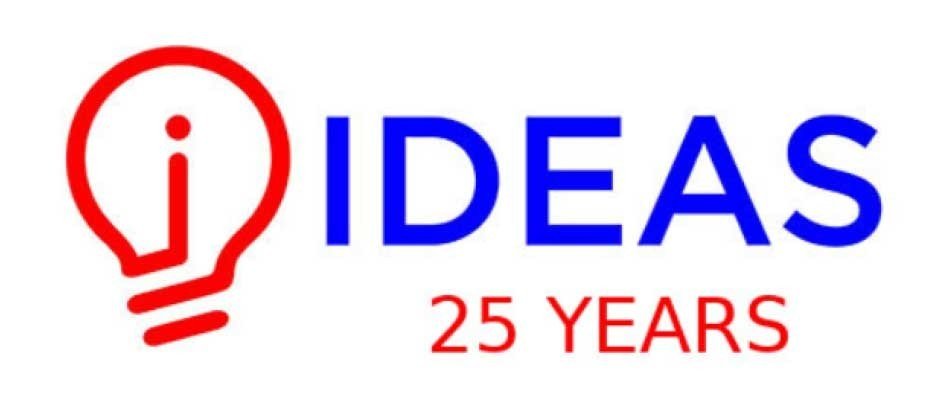| ISSN | 2615-9813 |
| ISSN (số cũ) | 1859-3682 |
Số 228 | Tháng 3/2025
Ý định tiếp tục sử dụng ô tô điện của khách hàng tại Thành phố Hồ Chí Minh
Trương Đình Thái, Nguyễn Thanh Trang, Trần Dục Thức
Tóm tắt:
Mục tiêu của nghiên cứu này là phân tích sự tác động của các yếu tố đến ý định tiếp tục sử dụng một loại sản phẩm công nghệ có giá trị cao - ô tô điện (OTĐ) của khách hàng tại Thành phố Hồ Chí Minh (TP. HCM). Nghiên cứu đã lấy mô hình UTAUT2 làm gốc, yếu tố Ảnh hưởng xã hội (SI) được điều chỉnh thành biến kích thích S trong khung S-O-R; sáu biến trung gian là Hiệu quả kỳ vọng (PE), Nỗ lực kỳ vọng (EE), Điều kiện thuận lợi (FC), Giá trị giá cả (PV), Động lực thụ hưởng (HM) và Thói quen (HP) đóng vai trò O, biến phụ thuộc Ý định tiếp tục sử dụng OTĐ (WP) đóng vai trò R. Kết quả phân tích mô hình cấu trúc SEM bằng SmartPLS 4.0 với dữ liệu từ 297 phiếu khảo sát trên Google Forms đưa ra sự khác biệt khá lớn so với các nghiên cứu về Ý định sử dụng hay Ý định mua OTĐ trước đây. Điều này được lý giải bằng lý thuyết Quá trình trải nghiệm, theo đó quá trình này đã làm thay đổi nhận thức khách hàng, WP chịu sự tác động chỉ từ hai yếu tố là FC và PE, còn các biến khác là không có ý nghĩa trong nghiên cứu này, thậm chí biến SI chỉ có tác động đến các biến trung gian chứ không tác động trực tiếp đến biến phụ thuộc. Dựa trên kết quả này, nghiên cứu đã đề xuất một số hàm ý quản trị theo hướng gia tăng trải nghiệm để giữ chân khách hàng cho các công ty sản xuất OTĐ.
Tài liệu tham khảo:
- Ahmad, S., Chaveeesuk, S., & Chaiyasoonthorn, W. (2024). The adoption of electric vehicle in Thailand with the moderating role of charging infrastructure: an extension of a UTAUT. International Journal of Sustainable Energy, 43(1), 2387908. doi: https://doi.org/10.1080/14786451.2024.2387908
- Anderson, K. C., Knight, D. K., Pookulangara, S., & Josiam, B. (2014). Influence of hedonic and utilitarian motivations on retailer loyalty and purchase intention: a facebook perspective. Journal of Retailing and Consumer Services, 21(5), 773-779. doi: https://doi.org/10.1016/j.jretconser.2014.05.007.
- Baabdullah, A. M. (2018). Consumer adoption of Mobile Social Network Games (M-SNGs) in Saudi Arabia: The role of social influence, hedonic motivation and trust. Technology in society, 53, 91-102. doi: https://doi.org/10.1016/j.techsoc.2018.01.004
- Barclay, D., Higgins, C., & Thompson, R. (1995). The partial least squares (PLS) approach to causal modeling: Personal computer adoption and use as an Illustration.
- Chang, C.-C., Yan, C.-F., & Tseng, J.-S. (2012). Perceived convenience in an extended technology acceptance model: Mobile technology and English learning for college students. Australasian Journal of Educational Technology, 28(5). doi: https://doi.org/10.14742/ajet.818
- Degirmenci, K., & Breitner, M. H. (2017). Consumer Purchase Intentions for Electric Vehicles: Is Green More Important Than Price and Range? Transportation Research Part D: Transport and Environment, 51 (2017) 250-260. doi: https://doi.org/10.1016/j.trd.2017.01.001
- Dong, X., Zhang, B., Wang, B., & Wang, Z. (2020). Urban households’ purchase intentions for pure electric vehicles under subsidy contexts in China: do cost factors matter? Transportation Research Part A: Policy and Practice, 135, 183-197. doi: https://doi.org/10.1016/j.tra.2020.03.012
- Gunawan, I., Redi, A. A. N. P., Santosa, A. A., Maghfiroh, M. F. N., Pandyaswargo, A. H., & Kurniawan, A. C. (2022). Determinants of customer intentions to use electric vehicle in Indonesia: An integrated model analysis. Sustainability, 14(4), 1972. doi: https://doi.org/10.3390/su14041972
- Hair Jr, J. F., Hult, G. T. M., Ringle, C. M., & Sarstedt, M. (2021). A primer on partial least squares structural equation modeling (PLS-SEM). Sage publications. doi:https://doi.org/10.1007/978-3-030-80519-7
- Hair, J. F., Black, W. C., Babin, B. J., & Anderson, R. E. (1998). Multivariate Data Analysis - A Global Perspective. NewYork: Upper Saddle River.
- Hegner, S. M., Beldad, A. D., & Brunswick, G. J. (2019). In automatic we trust: Investigating the impact of trust, control, personality characteristics, and extrinsic and intrinsic motivations on the acceptance of autonomous vehicles. International Journal of Human–Computer Interaction, 35(19), 1769-1780. doi: https://doi.org/10.1080/10447318.2019.1572353
- Hidayanto, A. N., & Ekawati, R. K. (2010, December). The influence of antecedent factors of IS/IT utilization towards organizational performance: A case study of IAIN Raden Fatah Palembang. In Proceeding of the 3rd International Conference on Information and Communication Technology for the Moslem World (ICT4M) 2010 (pp. H-40). IEEE. doi: 10.1109/ICT4M.2010.5971937
- Khazaei, H. (2019). The Influence of Personal Innovativeness and Price Value on Intention to Use of Electric Vehicles in Malaysia. European Online Journal Of Natural And Social Sciences, 8(3), pp. 483-494. Retrieved from https://european-science.com/eojnss/article/view/5855
- Khazaei, H., & Tareq, M. A. (2021). Moderating effects of personal innovativeness and driving experience on factors influencing adoption of BEVs in Malaysia: An integrated SEM–BSEM approach. Heliyon, 7(9), e08072.
- Kim, H. W., & Kankanhalli, A. (2009). Investigating user resistance to information systems implementation: A status quo bias perspective. MIS quarterly, 567-582. doi: https://doi.org/10.2307/20650309
- Krishnan, V. V., & Koshy, B. I. (2021). Evaluating the factors influencing purchase intention of electric vehicles in households owning conventional vehicles. Case Studies on Transport Policy, 9(3), 1122-1129. doi: https://doi.org/10.1016/j.cstp.2021.05.013
- Lee, J., Baig, F., Talpur, M. A. H., & Shaikh, S. (2021). Public intentions to purchase electric vehicles in Pakistan. Sustainability, 13(10), 5523. doi: https://doi.org/10.3390/su13105523
- Mehrabian, A., & Russell, J. A. (1974). The basic emotional impact of environments. Perceptual and motor skills, 38(1), 283-301. doi: https://doi.org/10.2466/pms.1974.38.1.283
- Nguyễn Thị Hoài Thương & Cao Việt Hiếu (2023). Các nhân tố tác động đến ý định mua xe OTĐ của người dân trên địa bàn tỉnh Bình Dương. Tập san Khoa học và kỹ thuật trường Đại học Bình Dương, 6(3). doi:https://doi.org/10.56097/binhduonguniversityjournalofscienceandtechnology.v6i3.165
- Nhật Minh. (2023). Những ưu, nhược điểm thường bị "giấu nhẹm" của OTĐ. Báo Dân trí. Truy cập 13/01/2025, từ https://dantri.com.vn/o-to-xe-may/nhung-uu-nhuoc-diem-thuong-bi-giau-nhem-cua-o-to-dien-20230424140301516.htm
- Pine II, B.J., & Gilmore, J. H. (1998) Welcome to the Experience Economy. Harvard Business Review, 97-105. doi: 10.4236/oalib.1112047
- Quang Anh. (2025). VinFast bán chạy nhất thị trường ôtô Việt Nam 2024. Báo vnexpress.net. Truy cập 13/01/2025, từ https://vnexpress.net/vinfast-ban-chay-nhat-thi-truong-oto-viet-nam-2024-4838097.html
- Ragab, M. A., & Arisha, A. (2018). Research methodology in business: A starter’s guide. https://doi.org/10.5430/mos.v5n1p1
- Samarasinghe, D., Kuruppu, G. N., & Dissanayake, T. (2024). Factors influencing the purchase intention toward electric vehicles; a nonuser perspective. South Asian Journal of Marketing. doi: https://doi.org/10.1108/SAJM-04-2023-0026
- Sang, Y. N., & Bekhet, H. A. (2015). Modelling Electric Vehicle Usage Intentions: An Empirical Study in Malaysia. Journal of Cleaner Production, 92 (2015) 75-83. doi: https://doi.org/10.1016/j.jclepro.2014.12.045.
- Saunders, M., Lewis, P., & Thornhill, A. (2003). Research methods forbusiness students. Essex: Prentice Hall: Financial Times.
- Schmitt, B. H. (1999) Experiential Marketing. Journal of Marketing Management, 15, 53-67.
- Shaw, C., & Ivens, J. (2002). The emotional customer experience. In Building Great Customer Experiences (pp. 41-62). London: Palgrave Macmillan UK. doi: https://doi.org/10.1057/9780230554719_3
- Thanh Giang. (2023). Nỗ lực thực hiện các cam kết của Việt Nam tại Hội nghị COP26. Báo Nhân Dân. Truy cập 13/01/2025, từ https://nhandan.vn/no-luc-thuc-hien-cam-ket-cua-viet-nam-tai-hoi-nghi-cop-26-post762361.html
- Lê Thanh Tiệp & Nguyễn Đắc Hà (2024). Các nhân tố ảnh hưởng đến ý định sử dụng OTĐ của người tiêu dùng tại TP. Hồ Chí Minh. Tạp chí Kinh tế và Dự báo. Truy cập 13/01/2025, từ https://kinhtevadubao.vn/cac-nhan-to-anh-huong-den-y-dinh-su-dung-o-to-dien-cua-nguoi-tieu-dung-tai-tp-ho-chi-minh-28611.html
- Trần Dục Thức & Nguyễn Minh Vy (2024). Ứng dụng khung S-O-R và mô hình UTAUT2 trong nghiên cứu ý định tiếp tục sử dụng chatbot AI của sinh viên tại Thành phố Hồ Chí Minh. Tạp chí Kinh tế và Ngân hàng Á châu, Số: 219, 63-77. https://doi.org/10.63065/ajeb.vn.2024.219.98266.
- Tran, T. B. Y., Nguyen, N., Greenland, S., & Saleem, M. A. (2023). Unrestricted tobacco marketing prompts young adults to smoke in an emerging market: a study of emotional responses. Journal of Strategic Marketing, 1-15. https://doi.org/10.1080/0965254X.2023.2268667.
- Bùi Thị Quỳnh Trang (2020). Nghiên cứu tác động của trải nghiệm khách hàng đến lòng trung thành tại các khách sạn ở Việt Nam. Tạp chí Khoa học Thương mại, 140, 33-43. doi: https://tap-chi.tmu.edu.vn/upload/news/files/140-b4.pdf
- Hoàng Trọng Trường (2022). Các yếu tố ảnh hưởng đến ý định mua OTĐ tại Việt Nam: Đề xuất khung phân tích từ nghiên cứu lý thuyết. VNU Journal of Economics and Business, 2(1), 31-31. doi: https://doi.org/10.25073/2588-1108/vnueab.4605
- Hoàng Trọng Trường (2023). Các nhân tố tác động đến ý định chuyển đổi từ ô tô truyền thống sang OTĐ của người tiêu dùng tại thị trường Việt Nam. VNU Journal of Economics and Business, 3(5), 36-36. doi: https://doi.org/10.57110/jebvn.v3i5.174
- Nguyễn Thị Vân Anh, Cao Thị Thuỳ Dương, Nguyễn Ánh Minh, Nguyễn Ngọc Trí và Nguyễn Đinh Yến Oanh (2024). Di chuyển xanh: các nhân tố ảnh hưởng đến giá trị cảm nhận và ý định mua xe máy điện của người dân đồng bằng sông Cửu Long. Tạp chí Khoa học Đại học Cần Thơ, 60(SDMD), 155-169. doi: https://doi.org/10.22144/ctujos.2024.447
- Venkatesh, V., Morris, M. G., Davis, G. B., & Davis, F. D. (2003). User acceptance of information technology: Toward a unified view. MIS Quarterly, 27(3), 425-478.
- Venkatesh, V., Thong, J. Y., & Xu, X. (2012). Consumer acceptance and use of information technology: extending the unified theory of acceptance and use of technology. MIS quarterly, 157-178. doi: https://doi.org/10.2307/41410412
- Nguyễn Lê Vinh, Vũ Quang Lãm, Phạm Nguyễn Thanh Bình, Lê Nguyên (2024). Nghiên cứu các yếu tố ảnh hưởng đến ý định mua xe điện của khách hàng tại Thành Phố Hồ Chí Minh. Hội thảo Kinh Tế Tuần Hoàn – Kinh Tế Bền Vững – Marketing Xanh ESR 2024 (457). NXB Tài Chính.
- Wu, J., Liao, H., Wang, J. W., & Chen, T. (2019). The role of environmental concern in the public acceptance of autonomous electric vehicles: A survey from China. Transportation Research Part F: Traffic Psychology and Behaviour, 60, 37-46. doi: https://doi.org/10.1016/j.trf.2018.09.029
- Xie, S., & Madni, G. R. (2023). Impact of social media on young generation’s green consumption behavior through subjective norms and perceived green value. Sustainability, 15(4), 3739. doi: https://doi.org/10.3390/su15043739
- Zhou, M., Long, P., Kong, N., Zhao, L., Jia, F., & Campy, K. S. (2021). Characterizing the motivational mechanism behind taxi driver’s adoption of electric vehicles for living: Insights from China. Transportation Research Part A: Policy and Practice, 144, 134-152. doi: https://doi.org/10.1016/j.tra.2021.01.001
Customers' Intention to Continue Using Electric Cars in Ho Chi Minh City
Abstract:
This study investigates the factors influencing customers’ intention to continue using electric cars in Ho Chi Minh City, focusing on high-value technological products. Drawing on the UTAUT2 model and integrating it with the Stimulus-Organism-Response (S-O-R) framework, the study positions Social Influence (SI) as the stimulus (S), six variables—Performance Expectancy (PE), Effort Expectancy (EE), Facilitating Conditions (FC), Price Value (PV), Hedonic Motivation (HM), and Habit (HB)—as the organism (O), and Continuance Intention (CI) as the response (R). Using data from 297 respondents via Google Forms and analyzing it with SmartPLS 4.0, the study yields findings that diverge from previous research on electric vehicle adoption. Specifically, only FC and PE significantly influence continuance intention, while other variables, including SI, show no direct impact. SI, however, indirectly affects CI through its influence on intermediary variables. These results suggest that customer experience plays a crucial role in shaping perceptions post-adoption. The study offers managerial implications for electric vehicle manufacturers, emphasizing the importance of enhancing user experience and support systems to foster long-term customer retention.







